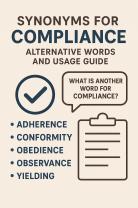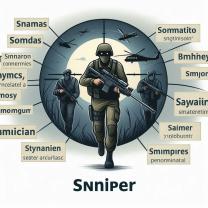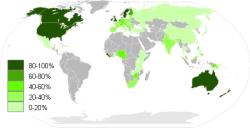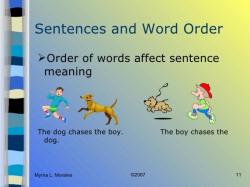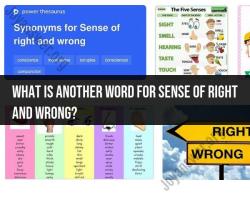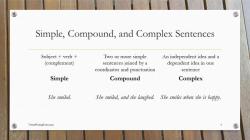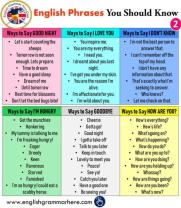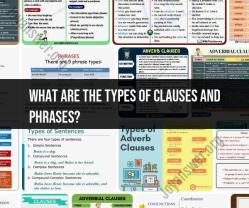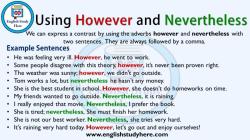What skills will I learn in Creative Writing?
You can use the word "restrain" in a sentence to indicate the act of holding back, controlling, or limiting something or someone. Here are a few example sentences using "restrain":
- "She had to restrain her excitement when she received the surprising news."
- "The police officer had to restrain the suspect to prevent them from escaping."
- "In a heated argument, it can be challenging to restrain one's emotions and maintain a civil conversation."
- "The leash was used to restrain the energetic puppy during the training session."
- "His sense of duty and responsibility restrained him from making impulsive decisions."
As for the skills you can learn in a Creative Writing course, they typically include:
Creative Expression: You'll learn how to express your ideas, thoughts, and emotions in a creative and engaging way through various forms of writing.
Storytelling: Creative Writing courses often focus on the art of storytelling, teaching you how to craft compelling narratives with well-developed characters, settings, and plots.
Character Development: You'll learn how to create complex and relatable characters and explore their motivations, backgrounds, and growth throughout a story.
Setting and Description: You'll develop the skills to vividly describe settings, landscapes, and environments to immerse readers in your writing.
Dialogue: Creative Writing courses help you craft realistic and engaging dialogue that advances the plot and reveals character personalities.
Poetry and Versification: If the course includes poetry, you'll learn techniques for writing poetry, including rhyme, meter, and figurative language.
Editing and Revision: You'll practice the art of revising and editing your work to improve clarity, coherence, and style.
Genre Exploration: Creative Writing courses may cover various genres, including fiction, nonfiction, poetry, and creative nonfiction, allowing you to explore different forms of creative writing.
Critique and Feedback: You'll learn how to provide constructive feedback to peers and receive feedback on your own work, fostering a culture of improvement and revision.
Literary Analysis: In some courses, you may analyze and discuss the works of established authors to gain insights into effective writing techniques.
Creative Process: Understanding the creative process, idea generation, and finding your unique voice are integral parts of creative writing education.
Publishing and Submission: Some courses may cover the process of submitting your work for publication, exploring potential publication avenues, and understanding the publishing industry.
These skills can be valuable for various forms of creative writing, including fiction, nonfiction, poetry, and more. They can help you become a more effective and expressive writer and provide a strong foundation for pursuing a career in writing or related fields.
Skills and Abilities Developed in Creative Writing Courses
Creative writing courses provide a rich learning environment where individuals can develop various essential skills and abilities, including:
Imagination and Creativity: Creative writing courses foster and nurture imagination, encouraging individuals to explore their creative potential and express their unique perspectives.
Storytelling and Narrative Techniques: Participants gain proficiency in crafting compelling narratives, mastering techniques such as plot development, character creation, dialogue, and setting descriptions.
Effective Communication and Expression: Creative writing emphasizes the power of language and expression, enabling individuals to articulate their thoughts, emotions, and experiences effectively.
Critical Thinking and Analysis: Creative writing encourages critical thinking and analysis, as individuals learn to evaluate their work, identify areas for improvement, and refine their writing skills.
Observational and Descriptive Skills: Creative writing cultivates keen observation and descriptive skills, helping individuals capture the nuances of the world around them and convey them vividly through their writing.
Creativity and Imagination in Creative Writing
Creativity and imagination are the cornerstones of creative writing. These courses nurture these essential qualities by:
Encouraging Exploration and Experimentation: Participants are encouraged to explore different genres, writing styles, and creative approaches, breaking free from rigid conventions and embracing experimentation.
Promoting Unconventional Thinking and Perspectives: Creative writing courses encourage individuals to challenge assumptions, explore unconventional viewpoints, and tap into their unique imaginations.
Providing Opportunities for Self-Expression: Creative writing provides a safe and supportive space for individuals to express their unique voices, emotions, and experiences without fear of judgment.
Nurturing Curiosity and a Sense of Wonder: Through creative writing, individuals cultivate a sense of curiosity and wonder, finding inspiration in everyday observations and exploring the depths of their own imaginations.
Techniques for Effective Storytelling and Expression
Creative writing courses equip individuals with various techniques to enhance their storytelling and expression:
Plot Development and Structuring Narratives: Participants learn to craft engaging plots with clear arcs, incorporating suspense, conflict, and resolution to captivate readers.
Character Creation and Depth: Creative writing emphasizes the importance of well-developed characters, guiding participants in creating relatable, complex, and memorable individuals.
Dialogue and Speech Patterns: Creative writing courses focus on the art of crafting natural, engaging dialogue that reflects characters' personalities and drives the narrative forward.
Vivid Descriptions and Sensory Details: Participants learn to employ evocative language and sensory details to paint vivid pictures in readers' minds, immersing them in the story's world.
Effective Use of Figurative Language: Creative writing encourages the use of figurative language, such as metaphors, similes, and personification, to add depth and nuance to the writing.
Self-Expression and Personal Growth Through Creative Writing
Creative writing offers a powerful tool for self-discovery, personal growth, and emotional expression:
Exploring Emotions and Experiences: Creative writing provides a safe and cathartic outlet for individuals to process emotions, explore personal experiences, and gain deeper self-understanding.
Developing Self-Confidence and Authenticity: Through creative expression, individuals build self-confidence, embrace their unique voices, and gain a stronger sense of identity.
Empathy and Understanding: Creative writing fosters empathy and understanding of diverse perspectives, as individuals connect with characters, their experiences, and the world around them.
Expanding Worldview and Perspective: Creative writing encourages individuals to challenge their own perspectives, consider different viewpoints, and expand their understanding of the world.
Personal Growth and Self-Discovery: Creative writing can be a catalyst for personal growth and self-discovery, as individuals explore their inner selves, confront challenges, and discover new facets of their personalities.
Career Paths and Opportunities for Creative Writers
Creative writing skills can open doors to a variety of fulfilling career paths, including:
Novelists, Screenwriters, and Playwrights: Creative writers can pursue careers in writing novels, screenplays, plays, and other forms of creative fiction.
Copywriters and Content Writers: Creative writing skills are highly valued in the advertising and marketing industry, where writers craft compelling copy and engaging content.
Journalists and Bloggers: Creative writers can find success in journalism and blogging, where they can share their unique perspectives, inform audiences, and engage readers.
Technical Writers and User Experience (UX) Writers: Creative writing skills can be applied in technical writing and UX writing, where writers create clear, concise, and engaging content for technical products and digital interfaces.
Editors, Proofreaders, and Copyeditors: Creative writers with a keen eye for detail can find rewarding careers in editing, proofreading, and copyediting, ensuring the quality and accuracy of written works.


